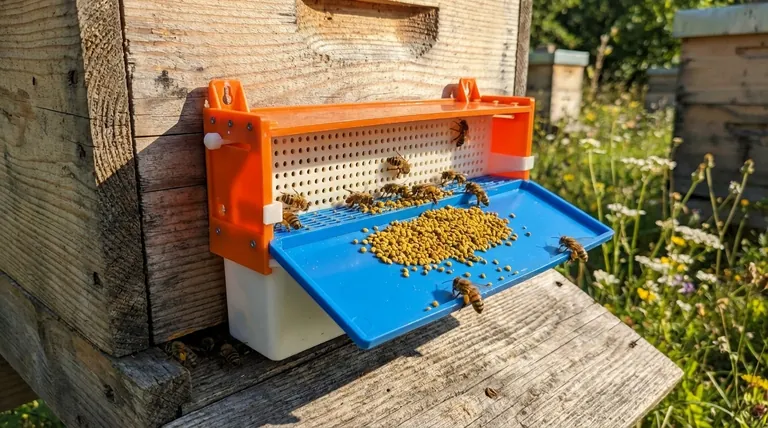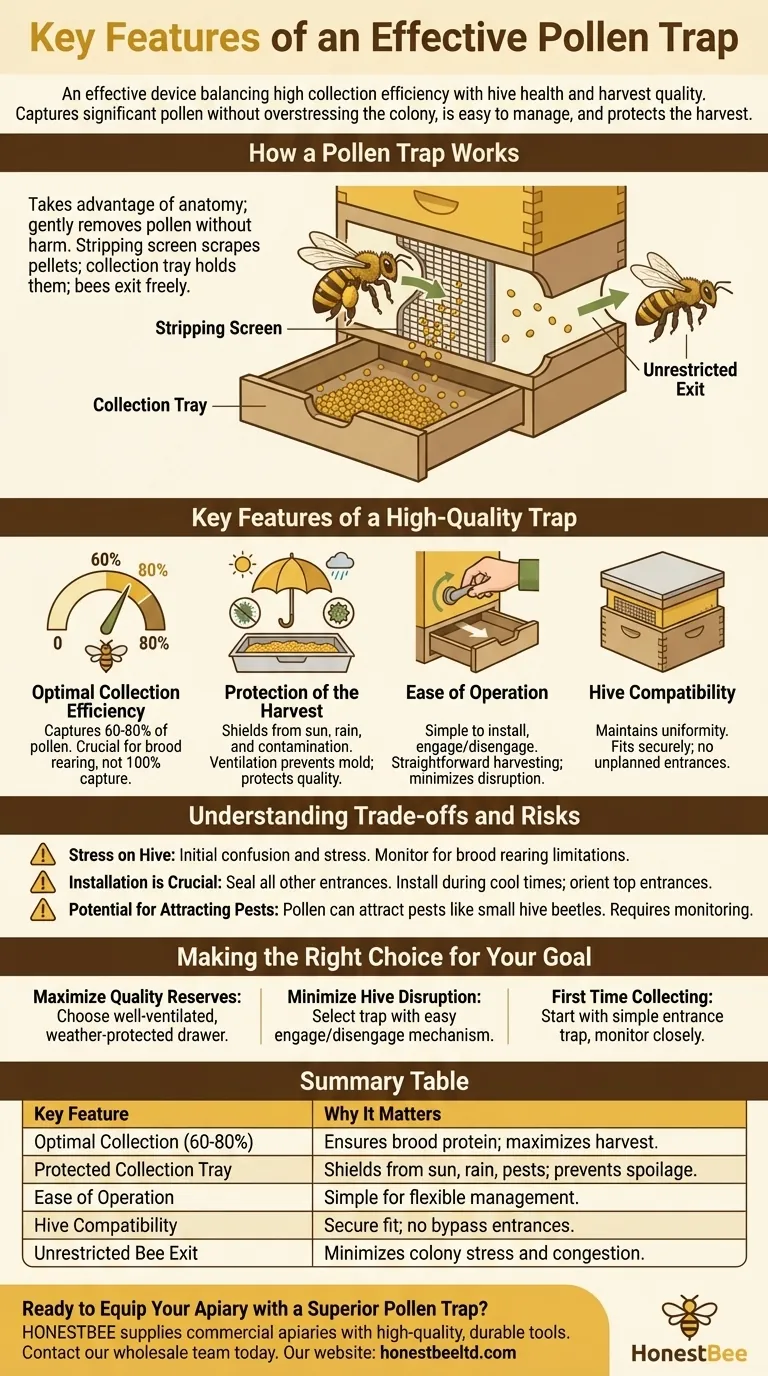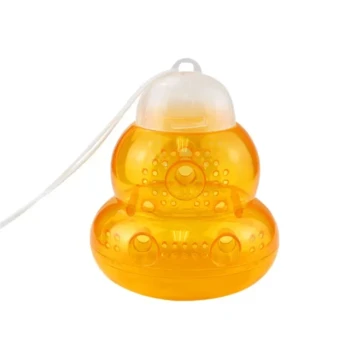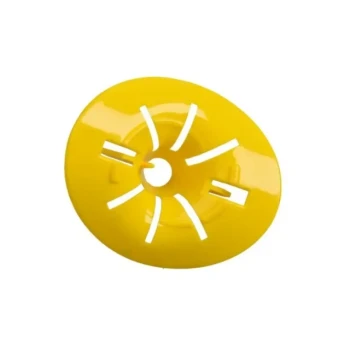An effective pollen trap is a device that balances high collection efficiency with the overall health of the hive and the quality of the harvest. It should capture a significant amount of incoming pollen without overly stressing the colony, be easy for the beekeeper to manage, and protect the collected pollen from environmental damage.
The central challenge is not simply to collect pollen, but to do so in a way that supports your apiary's long-term health. A well-designed trap is an instrument of precision, carefully balancing your collection goals against the colony's nutritional needs.

How a Pollen Trap Works
A pollen trap is a simple yet ingenious device that takes advantage of a honey bee's anatomy. It is designed to gently remove pollen pellets without harming the bee.
The Stripping Screen
The core of the trap is a stripping screen or mesh. Returning forager bees are forced to crawl through openings in this screen to re-enter the hive.
These openings are just large enough for the bee but small enough to scrape the pollen pellets from the corbiculae (pollen baskets) on their hind legs.
The Collection Tray
The dislodged pollen pellets fall through the screen into a collection tray or drawer below. This tray holds the pollen until the beekeeper can harvest it.
Unrestricted Exit
A critical design feature is that bees must be able to leave the hive unrestricted. The stripping mechanism only applies to returning foragers, preventing traffic jams and unnecessary stress on the colony.
Key Features of a High-Quality Trap
When evaluating a pollen trap, several features separate an effective tool from one that can cause problems for you and your bees.
Optimal Collection Efficiency
A good trap will capture between 60% and 80% of incoming pollen. It is crucial that the trap does not capture 100% of the pollen.
The remaining portion that gets through is essential for the bees to feed their brood, ensuring the colony's larvae receive the protein they need to develop.
Protection of the Harvest
The collection tray must protect the pollen from direct sunlight, rain, and contamination. Proper ventilation is also key to preventing mold.
Pollen is a high-protein food source that spoils quickly if exposed to moisture and heat. The trap's design directly impacts the quality and usability of your harvest.
Ease of Operation
The trap should be simple for the beekeeper to install, engage, and disengage. Many beekeepers only collect pollen intermittently, so being able to easily bypass the trap is a significant advantage.
Harvesting from the collection drawer should also be straightforward, minimizing disruption to the hive entrance.
Hive Compatibility
An effective trap is designed to maintain uniformity with standard hive components. It should fit securely and without creating new, unplanned entrances that bees could use to bypass the trap.
Understanding the Trade-offs and Risks
Using a pollen trap is an intervention that requires careful management. Understanding the potential downsides is critical for responsible beekeeping.
Stress on the Hive
Forcing bees through a new, constricted entrance can cause initial confusion and stress. It may take bees anywhere from a few hours to a few days to fully adjust.
Furthermore, reducing the amount of pollen entering the hive can limit the resources available for brood rearing if not managed carefully.
Installation is Crucial
Proper installation is non-negotiable. You must seal all other potential hive entrances to ensure bees use the trap.
Install the trap on a cool day or in the morning to prevent the hive from overheating due to reduced entrance ventilation and initial bee congestion. For top-entrance traps, it's wise to orient the bees to that top entrance for a week or two before installing the trap itself.
Potential for Attracting Pests
The collected pollen in the tray can sometimes attract other pests, such as small hive beetles. A well-designed trap will have features to mitigate this, but it remains a factor to monitor.
Making the Right Choice for Your Goal
Selecting a pollen trap depends on your specific objectives and management style.
- If your primary focus is maximizing high-quality pollen reserves: Choose a trap with a well-ventilated, weather-protected collection drawer to prevent mold and degradation.
- If your primary focus is minimizing hive disruption: Select a trap that is famously easy to engage and disengage, allowing you to collect pollen on a limited schedule.
- If you are collecting pollen for the first time: Start with a simple entrance-style trap and monitor your colony's health and mood closely before, during, and after collection periods.
Ultimately, the best pollen trap is a tool that enhances your beekeeping practice without compromising the welfare of your colonies.
Summary Table:
| Key Feature | Why It Matters |
|---|---|
| Optimal Collection (60-80%) | Ensures brood gets essential protein while maximizing harvest. |
| Protected Collection Tray | Shields pollen from sun, rain, and pests to prevent spoilage. |
| Ease of Operation | Simple to install, engage, and disengage for flexible management. |
| Hive Compatibility | Fits standard hives securely without creating bypass entrances. |
| Unrestricted Bee Exit | Allows bees to leave freely, minimizing colony stress and congestion. |
Ready to Equip Your Apiary with a Superior Pollen Trap?
HONESTBEE supplies commercial apiaries and beekeeping equipment distributors with the high-quality, durable tools needed for efficient and sustainable operations. Our wholesale-focused pollen traps are designed with the key features that matter: optimal collection efficiency, robust construction, and beekeeper-friendly operation.
Let us help you enhance your harvests and protect your colonies.
Contact our wholesale team today to discuss your needs and discover how HONESTBEE can be your reliable partner in beekeeping supplies.
Visual Guide

Related Products
- 30 cm Plastic Entrance Hole Bee Pollen Trap and Collector
- Removable Plastic Pollen Trap With Ventilated Tray for Bees Pollen Collector
- Plastic Bee Pollen Trap Strips Comb Catcher Collector
- Professional Dual-End Stainless Steel Hive Tool for Beekeeping
- HONESTBEE Advanced Ergonomic Stainless Steel Hive Tool for Beekeeping
People Also Ask
- How frequently should pollen be harvested from the traps? Ensure Optimal Hive Health & Superior Quality
- How do bees adjust to a new pollen trap entrance? Ensure a Smooth Transition for Your Hive
- What is a pollen trap and how does it work? A Guide to Harvesting Bee Pollen
- What are the primary reasons beekeepers collect bee pollen? Boost Hive Health and Generate Income
- How is pollen collected from beehives? A Guide to Harvesting with Pollen Traps



















